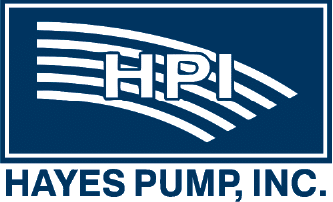Home » Blog » The Industrial Workhorse: Self Priming Centrifugal Pumps
The Industrial Workhorse: Self Priming Centrifugal Pumps

In the demanding world of industrial operations, reliable fluid transfer is paramount. From managing wastewater to circulating vital chemicals, the right pump can make all the difference. Among the diverse array of pumping solutions, the self priming centrifugal pump stands out as a true workhorse, offering significant advantages in many challenging applications.
What is a Self Priming Pump?
At its core, a pump moves fluids by creating a pressure differential. Most centrifugal pumps require their casing and suction line to be filled with liquid (primed) before they can begin to operate. If there's air in the system, they'll simply churn, unable to create the necessary vacuum to draw fluid.
A self priming pump, however, is ingeniously designed to overcome this limitation. It has a special casing that incorporates a built-in reservoir. When the pump starts, this reservoir retains a certain amount of liquid from the previous operation. This liquid is then used to mix with and displace the air in the suction line, effectively creating a vacuum that draws the new fluid into the pump. Once the air is purged, the pump operates like a standard centrifugal pump, continuously moving the liquid. This eliminates the need for external priming systems, foot valves, or manual intervention, making them highly suitable for applications where the suction line may be located above the fluid level or where intermittent flow can cause air pockets to form.
Impeller Versatility: Matching the Pump to the Fluid
The impeller is the heart of a centrifugal pump, responsible for imparting kinetic energy to the fluid. Self priming pumps can be equipped with various impeller types, each suited for different fluid characteristics:
- Open Impeller: These impellers have vanes that are open on both sides. They are excellent for handling fluids with a high concentration of suspended solids, slurries, and stringy materials, as they are less prone to clogging.
- Semi-Open Impeller: With a backplate but open vanes on the front, semi-open impellers offer a good balance between solids handling capability and efficiency. They are often used for fluids with some suspended solids or those that are mildly abrasive.
- Closed Impeller: Featuring shrouds on both sides of the vanes, closed impellers are the most efficient type and are ideal for pumping clean, non-abrasive liquids. They provide higher head and efficiency but are susceptible to clogging if solids are present.
- Cutter/Chopper Impellers: Specialized pump impellers designed to handle fluids containing solids, such as wastewater or sewage, by incorporating cutting/chopping elements to grind and shred solids before they enter the pump. These cutting/chopping elements, often shaped like sharp-edged vanes or bars, prevent clogging and damage to the pump.
Industrial Applications: Where Self Priming Pumps Shine
The self priming capability, combined with their robust construction, makes these pumps indispensable in a wide range of industrial scenarios:
Open Sump Uses
Open sumps, often found in industrial facilities, construction sites, and mining operations, collect wastewater, storm runoff, or process fluids. Self priming pumps are perfectly suited for these applications because:
- Intermittent Operation: They can be left unattended and will re-prime themselves each time they are started, even if the sump level fluctuates and the suction line becomes exposed to air.
- Solids Handling: Many open sumps contain debris and self priming pumps, especially those with open or semi-open impellers, can effectively handle these solids without clogging.
Below Grade Tank and Fluid Supply Uses
Self priming pumps are also critical for below-grade tank and fluid supply systems, where the pump is located above the liquid source, such as in underground storage tanks or reservoirs. Their self priming capability allows them to lift fluid from below without requiring a flooded suction line. This makes them effective for:
- Fuel and Chemical Transfer: For underground storage tanks containing fuels, lubricants, or various chemicals, self priming pumps can reliably draw the fluid to the surface for dispensing or transfer.
- Process Water Supply: In manufacturing plants, if process water is stored in below-grade reservoirs, self priming pumps ensure a consistent and reliable supply to production lines.
Choosing the Right Impeller for the Job
Let's look at some specific examples to illustrate the importance of impeller selection:
- Open Impeller: Imagine a large food processing plant dealing with wastewater containing vegetable scraps, fibrous material, and general washdown debris. A self priming pump equipped with an open impeller would be the ideal choice here. Its design minimizes the risk of clogging from the solids, ensuring continuous operation and preventing costly downtime. Similarly, in a mining operation where pumping slurry with abrasive rock particles is common, an open or robust semi-open impeller would be crucial for longevity and efficient material transfer.
- Closed Impeller: Consider a pharmaceutical facility that needs to transfer deionized water from a storage tank to a mixing vessel. Here, a self priming pump with a closed impeller would be preferred. The high efficiency of the closed impeller would ensure optimal energy usage and since the fluid is clean, there's no concern about clogging. Another example would be a chemical plant transferring a non-abrasive, corrosive chemical between tanks. A self priming pump with a closed impeller (made from chemically resistant materials) would provide efficient and safe transfer, maintaining the integrity of the fluid and the pump.
If you are unsure which impeller would be best for your specific needs, the experts at Hayes Group are here to help!
Understanding Differences Between Self Priming Pumps and Submersible Pumps
While submersible pumps are ideal for some applications, self priming centrifugal pumps offer distinct advantages for other applications, particularly in terms of maintenance and operational flexibility.
- No Special Motors: Submersible pumps require specially sealed, waterproof motors designed to operate submerged. This can make them more complex to maintain and repair. Self priming pumps, being mounted externally, use standard, readily available industrial motors, simplifying motor selection, maintenance, and replacement.
- Drive Flexibility: Self priming pumps differ from submersible pumps in the way they are driven. They can be directly coupled to a motor or driven via a belt and sheave system. These options allow for easy speed control by simply changing the sheave sizes, enabling operators to fine-tune pump performance to match varying flow requirements. Furthermore, the belt acts as a natural pump protection mechanism; in the event of a severe clog or seizure, the belt may slip or break before major damage occurs to the pump or motor, saving on costly repairs.
Understanding Differences Between Self Prime Pumps and Vertical Sump Pumps
Vertical sump pumps are effective in some situations while self prime pumps are more ideal in others. It is important to understand these differences.
- No Long Drive Shafts: Vertical sump pumps require long drive shafts that extend from the motor above the sump down to the impeller submerged in the fluid. These shafts can be prone to vibration, require alignment, and are difficult to access for maintenance. Self priming pumps, mounted at ground level, eliminate the need for long drive shafts.
- No Column Pipes: Associated with long drive shafts are equally long column pipes that enclose the shaft and guide the fluid. These pipes add to the complexity and cost of installation and maintenance. Because self priming pumps do not require long drive shafts or column pipes, their installation and maintenance can be more cost effective for some applications compared to a vertical sump pump. Self priming pumps also have the ability to use simple suction with discharge piping.
- No Lower Product Lubricated Bearings: Many vertical sump pumps rely on the pumped fluid to lubricate lower bearings within the sump. If the fluid contains abrasives or is corrosive, these bearings can wear prematurely, leading to increased maintenance and reduced pump life. Self priming pumps keep all bearings above the fluid level, allowing for traditional lubrication methods and isolating them from the pumped medium. This significantly extends bearing life and reduces maintenance.
Conclusion
In conclusion, self priming centrifugal pumps are invaluable assets in industrial settings. Their ability to automatically prime, combined with the versatility of different impeller types, makes them a reliable and efficient solution. They are an appropriate choice for a vast array of fluid transfer challenges, from managing challenging waste streams to ensuring the smooth flow of critical process fluids. When your industrial application demands dependable fluid handling, Hayes Group has the self priming pump solution you need.



